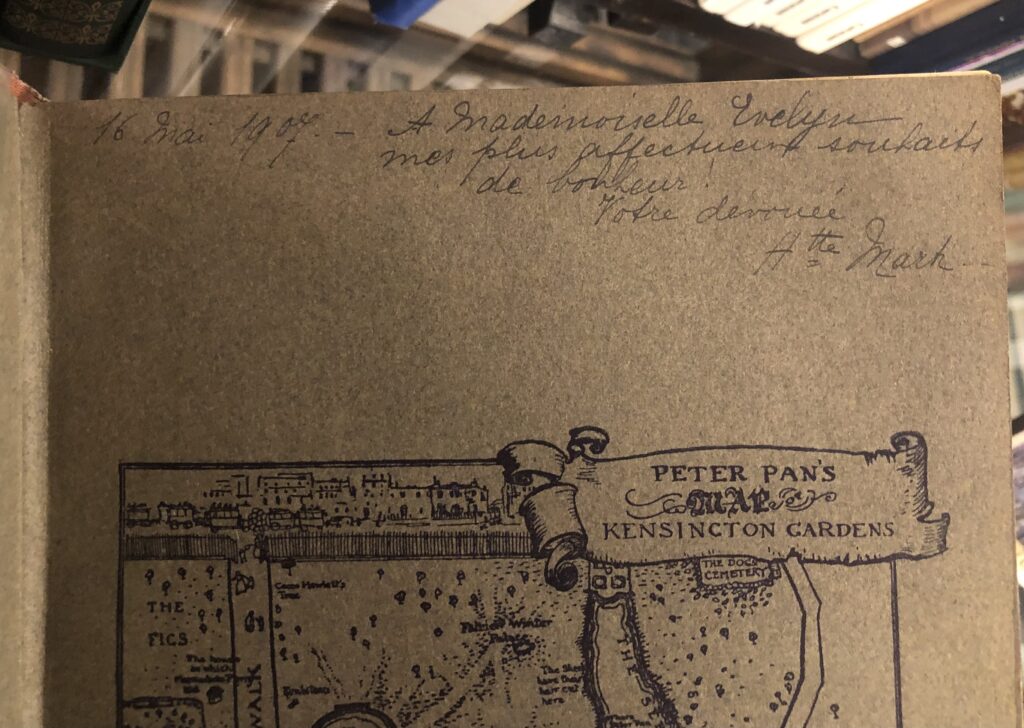by J.M. Barrie, illustrated by Arthur Rackham
Second British Edition | Hodder & Stoughton | 1907
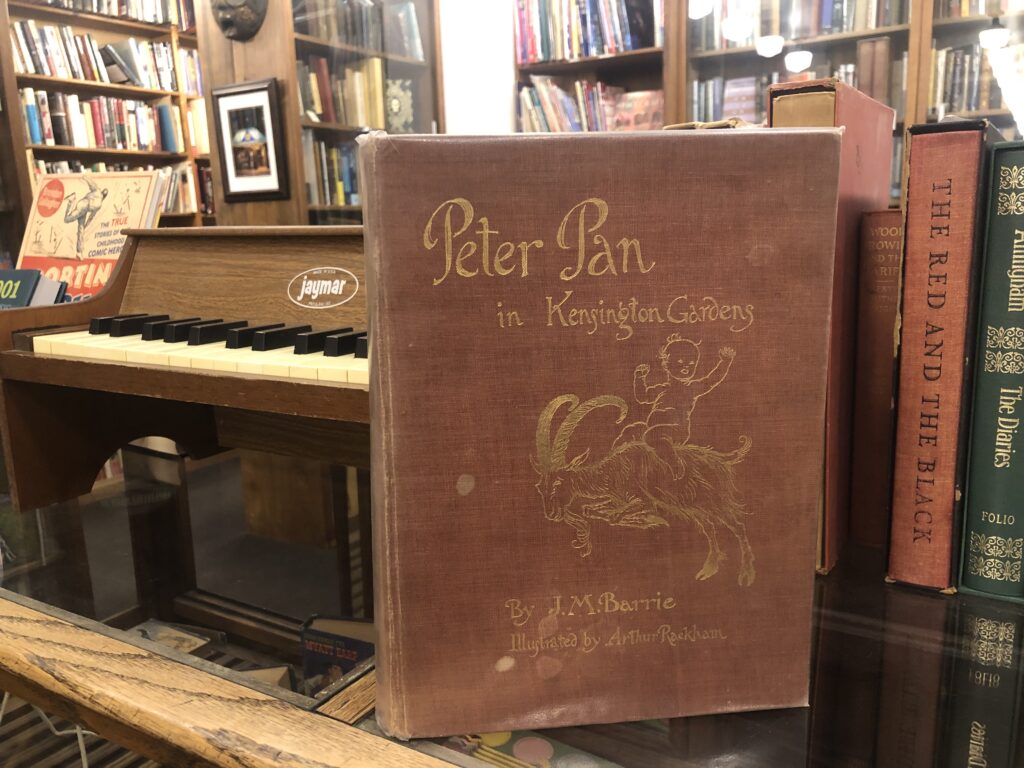
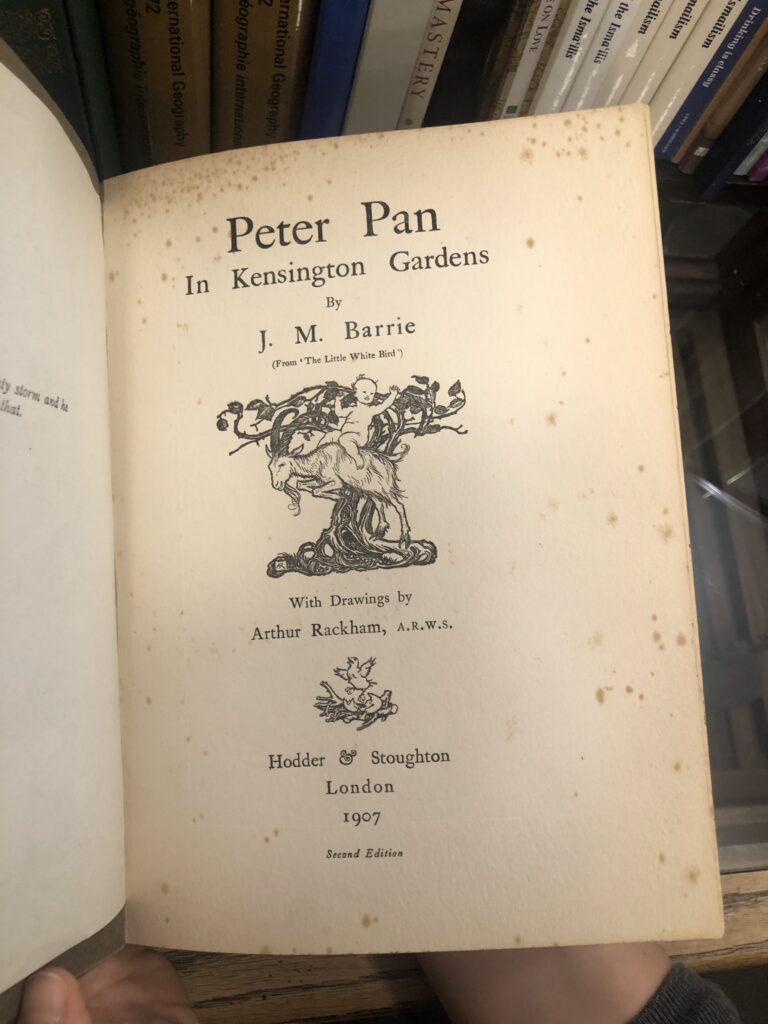
In 1902, Scottish playwright and novelist J.M. Barrie wrote The Little White Bird, a novel for adult audiences that addressed and honored the idea of “the eternal child.” Six chapters in the middle were particularly beloved, telling the story of an infant who was part bird but needed to learn how to live without flight. Barrie repurposed and republished these six chapters in 1906, in a children’s book called Peter Pan in Kensington Gardens. Thus, the timeless character of Peter Pan made his way into the world.
To this day, Peter Pan and his fantasyland can be found on children’s bookshelves across the globe. But the Peter Pan we know and love would not be who he is without the illustrations of Arthur Rackham, which adorned the pages of the first, second, and other early editions of this book.
Rackham’s illustration of Peter Pan in Kensington Gardens came at a significant time in his career. The previous year, he illustrated a version of Rip van Winkle that established him as the preeminent decorative illustrator of the Edwardian period. After seeing these illustrations in an exhibit at the Leicester Galleries in London, where they were displayed to great acclaim, J.M. Barrie commissioned Rackham to illustrate his new children’s book, Peter Pan in Kensington Gardens. The following year, Rackham illustrated an edition of Lewis Carroll’s Alice in Wonderland, the success of which boosted his career, ensuring he would go on to illustrate many more beloved tales such as A Midsummer Night’s Dream (1908), Mother Goose (1913), and Cinderella (1919).
In these early years of the 20th century, Rackham took advantage of evolving technology to create his own unique style of illustration. He no longer needed to rely on an engraver to imperfectly copy his illustrations, because they could now be photographed and reproduced mechanically. This also meant he could use watercolor — a skill he greatly improved during these years thanks to the instruction of his artist wife, Edyth Starkie — to bring life and light to his signature ink line drawings.
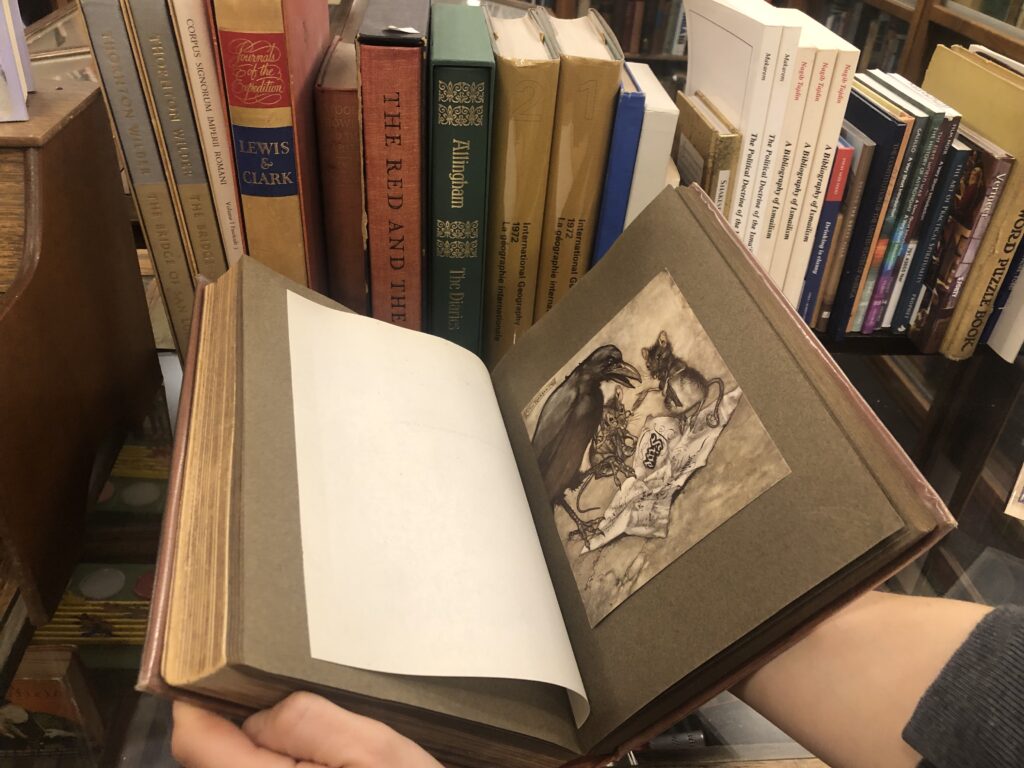
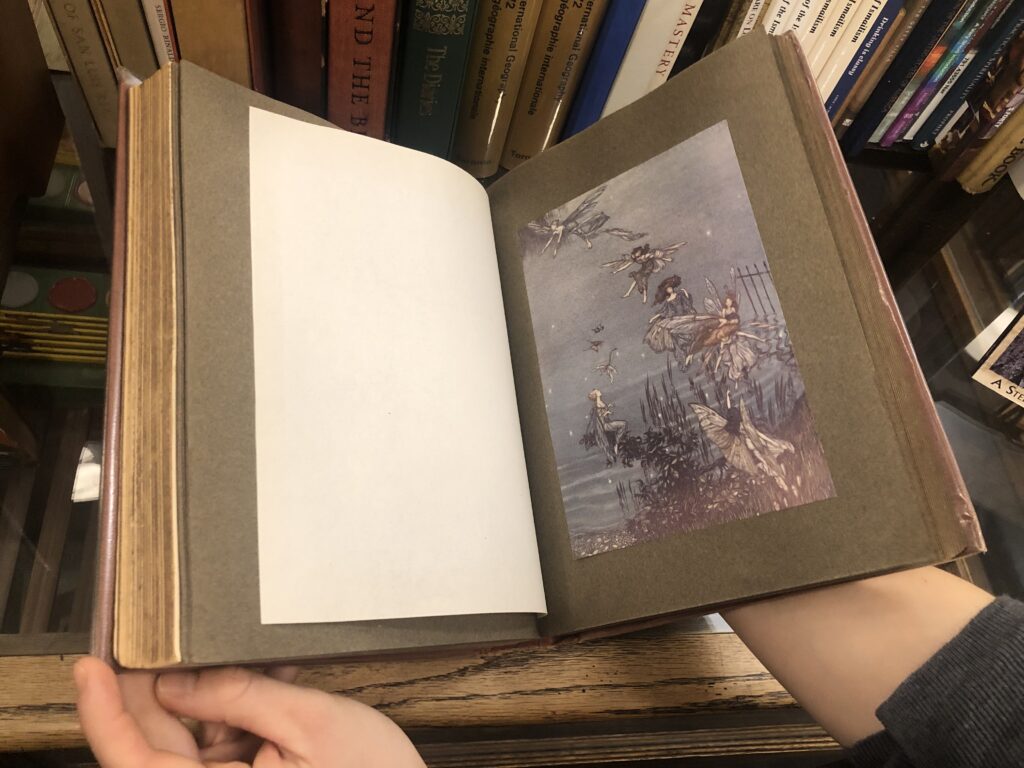
Rackham excelled at capturing whimsy, fantasy, and the softly grotesque, turning Kensington Gardens into a fairyland of willowy sprites, gnarled villains, and anthropomorphized trees. It is said that his illustrations paved the way for how the world and characters of Barrie’s Peter Pan were portrayed in the host of film and book adaptations that would follow, especially Disney’s version of Barrie’s 1904 play (and 1911 novel), Peter and Wendy. To this end, Peter Pan in Kensington Gardens is more than just a book. Together, Barrie and Rackham created a world that would have lingering impacts on childhood imaginations for a century and counting.
(A fun fact that we love: Despite a warning that this book’s “sale and exhibition in France is prohibited,” the Peter Pan in Kensington Gardens found at the Dawn Treader was inscribed to “Mademoiselle Evelyn” in French in 1907!)
